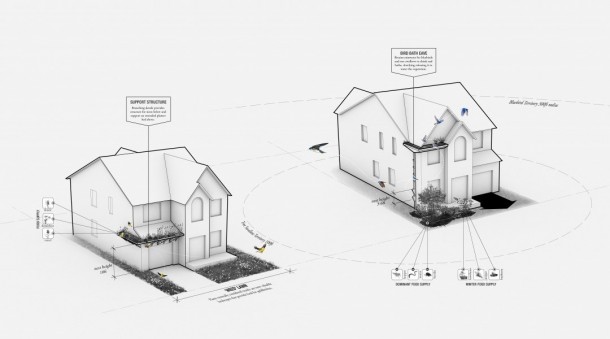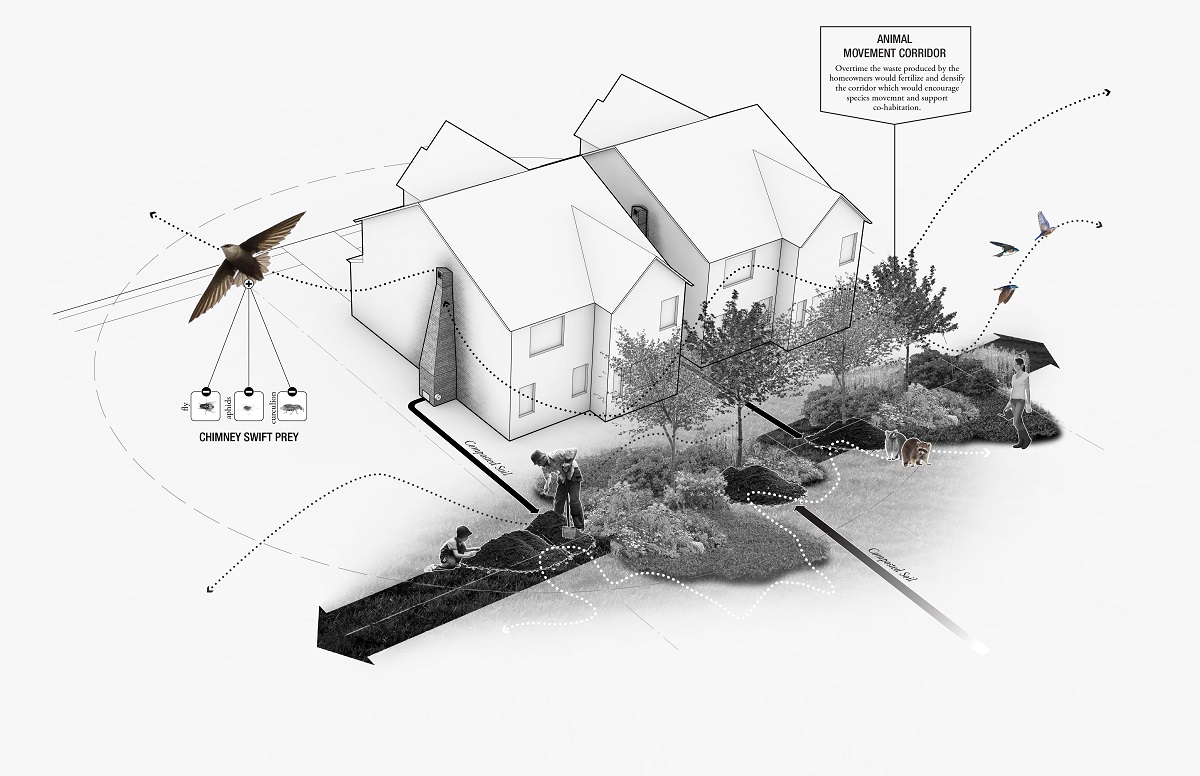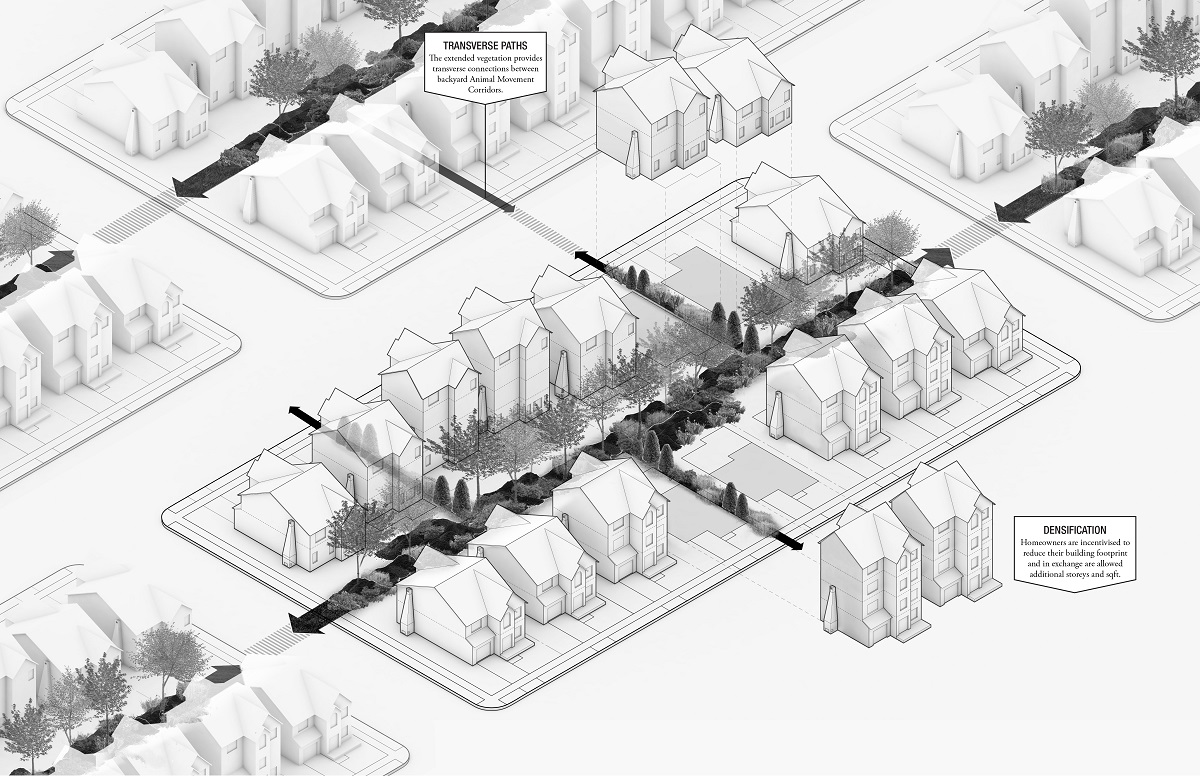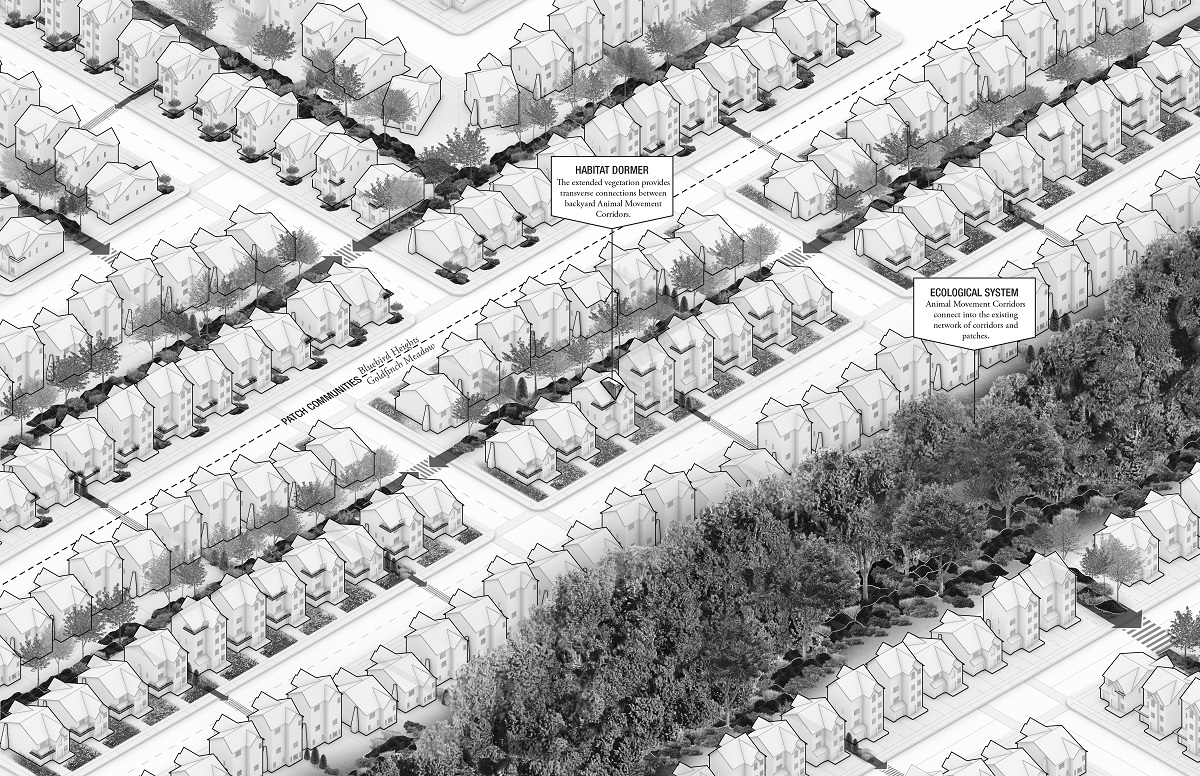Throughout North America, the suburbs are a pervasive condition that emerge at the periphery of every major metropolitan area. Ingrained cultural expectations and conventional construction methods ensure that the suburbs are reproduced using the same generic form—the single-family, detached house surrounded by a pristine, green lawn, and dependent on vehicular transportation—once considered the American Dream. It is widely accepted that the global population is urbanizing, however the reality in North America is that the greatest population growth is actually occurring in the suburbs. From 1991-2001 Canada’s eight major cities experienced an average 59% increase in low density, suburban housing. Of all development that occurred, 25% of it was built 25km or more outside of the city center. By 2011, 66% of Canada’s population lived in some form of suburbs.[1] At that point it was definitive, “Canada is a suburban nation.”[2]
Suburbs exist at the edge, functioning as a borderland between dense urban centers and expansive agricultural regions. The novel ecosystems produced by this form of community development establish buffer zones around cities, spaces of intense, often conflicting, anthropogenic and ecological pressures. Jennifer Wolch writes in her essay Anima Urbis, “Nowhere is the complexity of human-animal spatial orderings more evident than in the urban-wildlands surrounding of metropolitan regions. Here, zoning ordinances and land use plans have often been used to allocate animals and people to designated areas, but such crisp divisions are rarely so straightforward on the ground.”[3] The suburbs therefore provide a rich field in which to explore strategies for mediating human and animal relationships within novel ecosystems.

The current anthropogenic processes which generate these novel suburban ecosystems produce fragmented and discontinuous landscapes that prioritize human spatial patterns over animal movement and inhabitation requirements. The predominance of monoculture lawns, limited diversity and density of vegetation, and lack of viable nesting sites due to the absence of mature trees, renders the newly developed, suburban landscape inhospitable to less adapted species. In addition, major highways and arterial roads bisect natural corridors, limiting animal movement to a restricted home range. These conflicting human and animal vectors of movement create significant threats of vehicular collision for terrestrial and avian species. How can we rethink the patterns and systems of development to overcome these challenges and construct diverse, multi-species communities?
Synanthropic Suburbia explores how the implementation of architectural scale prosthetics across a suburban community can influence patterns of development. The objective is to strategically fortify the ecological matrix by enhancing vegetation, providing habitats and increasing connectivity between existing patches and corridors. The individual implementation of each architectural scale prosthetic may have minor affect on its immediate environment. However, the multiplication of synanthropic prosthetics could catalyze the development of new spatial typologies that shift suburban priorities from aesthetic appearances of individual properties towards the development of a robust ecosystem.

The principles of the Extended Eave prosthetic are easily modified to create variations which support different bird species and generate a distinct street frontage. Suburban developers could use this system to define Patch Communities – neighbourhoods which are ecologically distinct from the typical matrix to attract a particular avian creature. The unique, ecosystem-derived identity could be leveraged as a marketing tool to promote the diverse quality of the neighbourhood, distinguishing it from the typical homogeneity of the suburbs.


When affixed to every suburban home, the Compost Chimney acts to not only process household waste but also fortify the soil and vegetation of novel suburban ecosystems. Conventional fencing is replaced with a new syn-urban typology, the Animal Movement Corridor, a vegetated corridor that provides privacy between properties and allows human and non-human populations to circulate through the suburban block. Over time, the Animal Movement Corridor weaves throughout the community establishing an ecologically robust network.

Gradually these syn-urban building blocks are multiplied across neighbourhood, region and territory, negotiating the boundary between human and animal to create vibrant social and ecological communities. Additional prosthetics and synanthropic building materials could be developed that enable the homeowner to further customize their home and surrounding ecosystem. The exterior appearance of a house would correspond to the aesthetic preferences and species tolerance of the individual homeowner. Suburban communities would no longer be named after the landscapes they replaced, but for the future ecosystems they want to cultivate.

[1] Turcotte, M. (2008). The city/suburb contrast: How to measure it? Canadian Social Trends, 85, Statistics Canada Catalogue no. 11-008-XWE. Retrieved from http://www.statcan.gc.ca/pub/11-008-x/2008001/t/10459/4097961-eng.htm#footnote1
[2] Gordon, D. L.A. & Janzen, M. (2013). Suburban Nation? Estimating the size of Canada’s suburban population. Journal of Architectural and Planning Research 30:3 pp. 197-220.
[3] Wolch, J. (2013). Anima Urbis. In A. Lourie Harrison (Ed.), Architectural Theories of the Environment: Posthuman Territory. New York: Routledge.







